The End of the Great Tupper-War

by
Kristin
(IC: blogger)
The End of the Great “Tupper-War”
I honestly can’t count the number of times I’ve opened our kitchen cabinets only to be pummeled by an avalanche of tumbling plastic containers. Or the amount of times I accidentally melted a container in the dishwasher, threw one out that was “pasta stained” and smelled funky, or punctured the side with a fork (it happened usually when I’d eat frozen mango or watermelon!). These incidents happened more often than I wanted, and after years of frustration, we still did nothing to improve our container collection. It wasn’t until we learned about the toxic chemicals found in plastics that we knew it was time to put an end to our great “Tupper-War”!
Although it seemed like a huge transition, making changes gradually made it easier for us. Over time we recycled our reusable plastic containers and stocked up on glass food storage containers, replaced our reusable plastic bottles with glass water bottles, and stopped buying single-use disposable bottles.
We are so happy we made the switch, and learning about the numerous benefits of glass over plastic helped us to spearhead plastic-free choices we continue try to practice at home. Below are 6 reasons why ending our Tupper-War was a true victory:
1. Glass won’t absorb food colors or smells. Like I mentioned earlier, we had many plastic containers that were tinted red or orange from pasta and other sauces. Because plastic is a porous material, it will absorb and retain food colors and odors—leaving those unwanted stains and smells. Glass, on the other hand, is non-permeable and to this day, all our glass containers are still crystal clear and smell clean!
2. Food and beverage safety. There are a variety of different types of plastics made from a combination of chemicals—some of which have been tested for safety and others that have not. This had us asking ourselves, “Why would some of the chemicals used in plastic not be tested for safety? Which plastics are considered safer?” If you opt to buy plastics or want to evaluate those plastic products you already own, this Plastic Code Guide will be a great resource for you. It lists the types of plastic considered “safer” and those that should be avoided. You can also find a more comprehensive read on various chemicals here if you’d like to learn more!
3. Taste. Now this is particularly true when it comes to my glass water bottle…I love my glassLifefactory bottle and can honestly say the taste of water in a plastic bottle is no competition to a refreshing sip from a glass one!
4. Eco-friendly. There are many reasons why glass is better for the environment than plastic and here are just a few reasons that really stood out to us: First, glass lasts longer and can be used and washed repeatedly without sacrificing its shape and durability. Because you won’t need to replace glass food storage containers as often as plastic containers, less environmental waste is created. Second, if you fill one disposable plastic bottle a quarter of the way with oil, it represents the amount of oil needed to make just one water bottle; therefore, a family of four switching to reusable bottles would save 27 gallons of oil a year! Third, one person switching to a reusable water bottle helps keep tons of CO2 out of the air per year (equivalent to about 2,580 “balloons” of CO2). Finally, when it comes to recycling, plastic bottles and containers lose their integrity over time while glass can be recycled time and time again without losing its quality.
5. More economical. Sipping from a reusable water bottle could save a whopping $550 a year (that is one disposable plastic water bottle daily at its average cost). Compare this to a one-time $15-$25 investment on a reusable water bottle! Plus, since glass containers won’t have to be replaced as often as plastic containers, you will end up saving money in the long run.
6. Multi-functional. We use our glass containers for food storage, food prep, serving, and baking…We can’t say the same for our old plastic ones!
Take a look at your home and see where you think it will be easiest and most beneficial for you to start making the switch from plastic to glass. Remember, no matter how big or small the change is that you make, you are making a positive difference!
SPECIAL DEAL: Receive 15% off plus free shipping on orders over $30 with the code: ORGANIZE at checkout at the Wild Mint Shop! The code will expire on 3/31.
Hannah Helsabeck is President and Co-Founder of Wild Mint, an online shop dedicated to helping families find toxin-free and eco-friendly products for healthier lifestyles. She is passionate about educating others on the benefits of healthy living and the importance of takings small steps towards eliminating exposure to toxins in people’s daily lives. She also enjoys finding new ways to be eco-conscious and is often found in the kitchen cooking up simple meals with real, whole foods. Hannah is the oldest of six kids, has amazing parents as role models in business as well as life, and currently lives in South Florida with her incredibly supportive husband.
I honestly can’t count the number of times I’ve opened our kitchen cabinets only to be pummeled by an avalanche of tumbling plastic containers. Or the amount of times I accidentally melted a container in the dishwasher, threw one out that was “pasta stained” and smelled funky, or punctured the side with a fork (it happened usually when I’d eat frozen mango or watermelon!). These incidents happened more often than I wanted, and after years of frustration, we still did nothing to improve our container collection. It wasn’t until we learned about the toxic chemicals found in plastics that we knew it was time to put an end to our great “Tupper-War”!
Although it seemed like a huge transition, making changes gradually made it easier for us. Over time we recycled our reusable plastic containers and stocked up on glass food storage containers, replaced our reusable plastic bottles with glass water bottles, and stopped buying single-use disposable bottles.
We are so happy we made the switch, and learning about the numerous benefits of glass over plastic helped us to spearhead plastic-free choices we continue try to practice at home. Below are 6 reasons why ending our Tupper-War was a true victory:
1. Glass won’t absorb food colors or smells. Like I mentioned earlier, we had many plastic containers that were tinted red or orange from pasta and other sauces. Because plastic is a porous material, it will absorb and retain food colors and odors—leaving those unwanted stains and smells. Glass, on the other hand, is non-permeable and to this day, all our glass containers are still crystal clear and smell clean!
2. Food and beverage safety. There are a variety of different types of plastics made from a combination of chemicals—some of which have been tested for safety and others that have not. This had us asking ourselves, “Why would some of the chemicals used in plastic not be tested for safety? Which plastics are considered safer?” If you opt to buy plastics or want to evaluate those plastic products you already own, this Plastic Code Guide will be a great resource for you. It lists the types of plastic considered “safer” and those that should be avoided. You can also find a more comprehensive read on various chemicals here if you’d like to learn more!
3. Taste. Now this is particularly true when it comes to my glass water bottle…I love my glassLifefactory bottle and can honestly say the taste of water in a plastic bottle is no competition to a refreshing sip from a glass one!
4. Eco-friendly. There are many reasons why glass is better for the environment than plastic and here are just a few reasons that really stood out to us: First, glass lasts longer and can be used and washed repeatedly without sacrificing its shape and durability. Because you won’t need to replace glass food storage containers as often as plastic containers, less environmental waste is created. Second, if you fill one disposable plastic bottle a quarter of the way with oil, it represents the amount of oil needed to make just one water bottle; therefore, a family of four switching to reusable bottles would save 27 gallons of oil a year! Third, one person switching to a reusable water bottle helps keep tons of CO2 out of the air per year (equivalent to about 2,580 “balloons” of CO2). Finally, when it comes to recycling, plastic bottles and containers lose their integrity over time while glass can be recycled time and time again without losing its quality.
5. More economical. Sipping from a reusable water bottle could save a whopping $550 a year (that is one disposable plastic water bottle daily at its average cost). Compare this to a one-time $15-$25 investment on a reusable water bottle! Plus, since glass containers won’t have to be replaced as often as plastic containers, you will end up saving money in the long run.
6. Multi-functional. We use our glass containers for food storage, food prep, serving, and baking…We can’t say the same for our old plastic ones!
Take a look at your home and see where you think it will be easiest and most beneficial for you to start making the switch from plastic to glass. Remember, no matter how big or small the change is that you make, you are making a positive difference!
SPECIAL DEAL: Receive 15% off plus free shipping on orders over $30 with the code: ORGANIZE at checkout at the Wild Mint Shop! The code will expire on 3/31.
Hannah Helsabeck is President and Co-Founder of Wild Mint, an online shop dedicated to helping families find toxin-free and eco-friendly products for healthier lifestyles. She is passionate about educating others on the benefits of healthy living and the importance of takings small steps towards eliminating exposure to toxins in people’s daily lives. She also enjoys finding new ways to be eco-conscious and is often found in the kitchen cooking up simple meals with real, whole foods. Hannah is the oldest of six kids, has amazing parents as role models in business as well as life, and currently lives in South Florida with her incredibly supportive husband.
Enjoyed the project?

Want more details about this and other DIY projects? Check out my blog post!
Published February 25th, 2014 6:06 AM
Comments
Join the conversation
3 of 7 comments
-
I have also started to weed out the plastic containers as well.. Glass is just more sanitary i think.. it can be sterilized.
 Linda P
on Feb 26, 2014
Linda P
on Feb 26, 2014
-
-
 Janine Bartram
on May 14, 2017
Janine Bartram
on May 14, 2017
These look like they have plastic lids though?
-



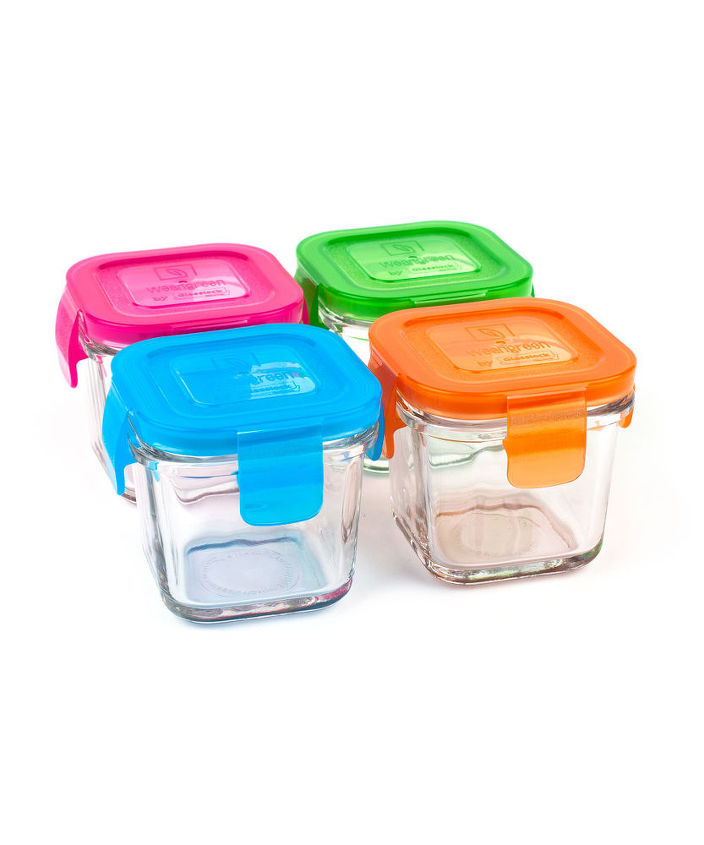
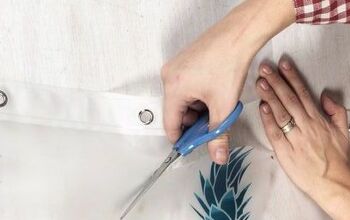
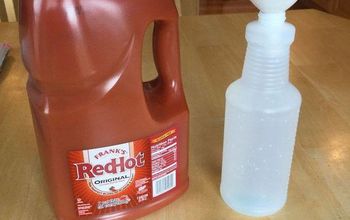


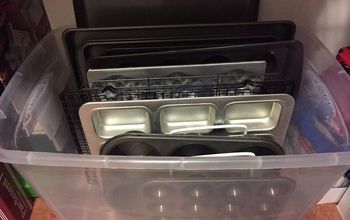



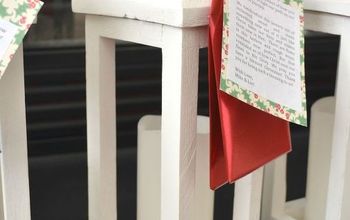

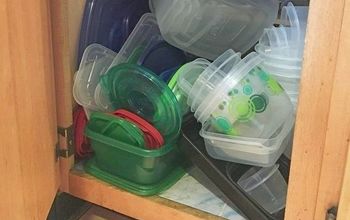




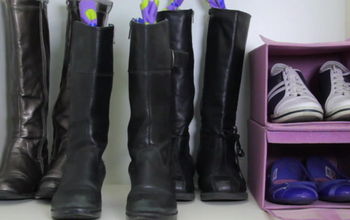




Frequently asked questions
Have a question about this project?